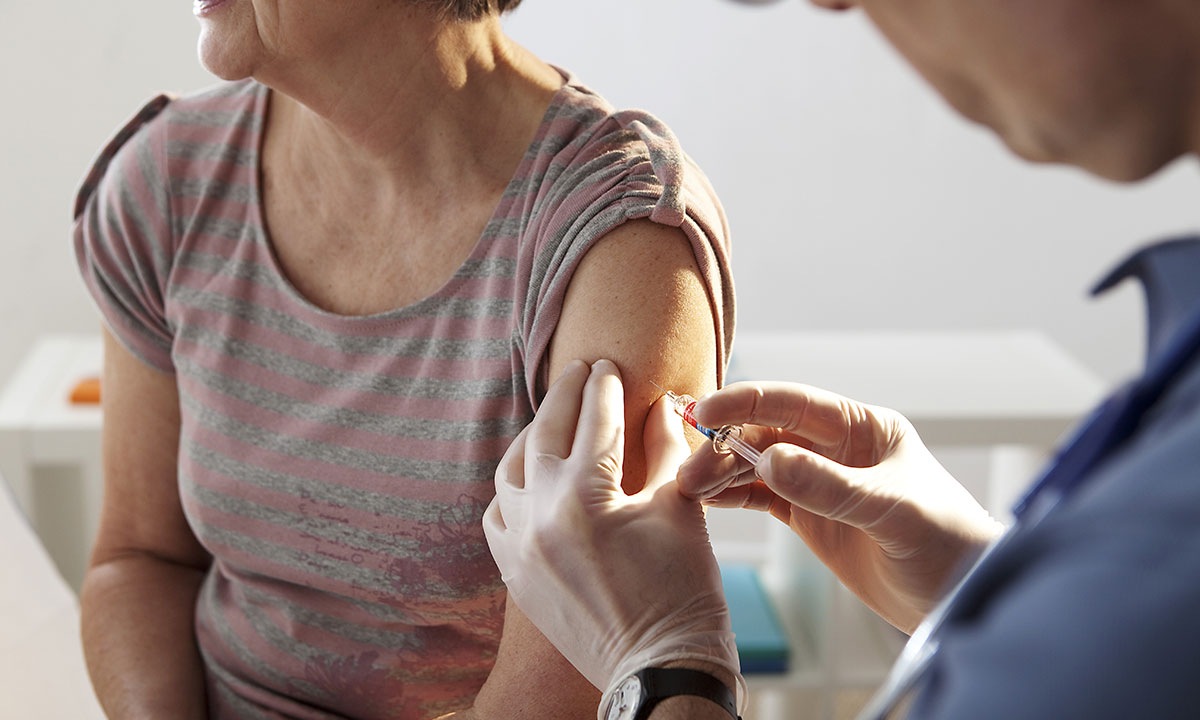EXPERTS will closely scrutinise the effectiveness of two new enhanced influenza vaccines for the over-65s that were introduced after the death of almost 1000 older Australians from influenza-related illness in 2017.
Writing in the MJA, Dr Sarah Sheridan from the National Centre for Immunisation Research and Surveillance (NCIRS), and coauthors wrote that in 2017 almost a quarter (22%) of the almost 250 000 notified cases of influenza were in people aged 65 years and over. More than 90% of the 1100 influenza-related deaths reported occurred in older adults.
In February 2018, the federal government announced that it would fund two new enhanced vaccines specifically for people aged 65 years and over. The two high-dose trivalent inactivated influenza vaccines (TIVs) – Fluzone High-Dose and Fluad – protect against both influenza A subtypes, but only one B lineage. The National Immunisation Program has funded standard TIVs since 1999, and quadrivalent influenza vaccines (QIVs) since 2016, which protect against both A subtypes and both B lineages.
In an MJA InSight podcast, Professor Kristine Macartney, Director of the NCIRS, said that the two new vaccines were developed to induce a stronger immune response than the standard vaccines, but in different ways.
She said Fluzone High-Dose has an increased amount of that haemagglutinin – 60µg for each strain, four times the 15µg for each strain used in the standard vaccine.
The second vaccine, Fluad, has the standard antigen dosing, she said, but includes a squalene-based MF59 oil-in-water adjuvant to recruit a stronger immune response than the standard vaccine.
“We are predicting they will improve protection in older people in most flu seasons of the order of a … 25% leg up from what the [standard vaccine available last year could] give us,” Professor Macartney said.
Professor Robert Booy, Head of the Clinical Research Team at the NCIRS, said that the new vaccines were a major advance, but their performance would be under close scrutiny.
“They will be a real improvement, but they are unlikely to be perfect,” Professor Booy said. “We need to examine what happens this year very carefully, after last year being so dreadful. We need to look at how well the different vaccines perform, and we can do that in close to real time.”
He said a head-to-head comparison would draw data from various sources to evaluate effectiveness in community-dwelling people aged 65 years and older, and in people in residential aged care facilities.
The researchers wrote in the MJA that, as the first country to publicly fund both new vaccines in the same population, Australia had a “unique opportunity” to conduct a head-to-head comparison of the two vaccines in the over-65s.
Professor Kanta Subbarao, Director of the WHO Collaborating Centre for Reference and Research on Influenza, welcomed the new vaccine options.
“We definitely need to improve our ability to protect older adults from influenza and the currently licensed QIV, standard-dose vaccine, is not optimal in protecting people over 65 years of age,” Professor Subbarao told MJA InSight. “I am delighted that we have additional options to use this year.”
She said that head-to-head comparison data were crucial in helping to determine if one of the new high-dose vaccines may be preferable to the other.
“It would be nice to know if there was a reason to prefer one over the other, and that can only be done by comparing them in a head-to-head comparison,” she said, adding that such information would be helpful not only in Australia but throughout the world.
“These vaccines are here to stay,” she said.
Professor Subbarao said that the new vaccines were more expensive than the standard vaccine, so cost-effectiveness data would also be helpful.
She said that the fact that the vaccine did not provide cover against both influenza B strains was not a major concern.
“The burden of illness caused by influenza B in older adults is much lower than the burden of influenza B in children,” she said. “Over the course of one’s lifetime, you are exposed to influenza viruses A and B types, so we anticipate that people over 65 years of age, with their prior exposure to both lineages of influenza B viruses, may have cross-lineage immunity that will carry them through the season.”
Also, she said, based on surveillance data from last year, B strains were not expected to be dominant this year.
“So far, that projection has borne out, but we haven’t had much of a flu season yet,” she said. “What we do know about influenza epidemics is that they can begin and be quite explosive, so we’re not past that yet.”
Professor Booy said that the uptake of influenza vaccine has vastly improved on the previous year.
“People have recognised that we had a lot of flu last year and they want to protect themselves,” he said. “As a result, there has been such a surge in demand that more vaccine had to be produced at short notice to meet the demand.”
And although the new enhanced vaccines were slightly more reactogenic than the standard-dose vaccine, Professor Booy said that there had yet to be any reports of serious side effects.
“The simple message is that these new vaccines will work moderately better [than the standard vaccines] but they certainly won’t be very highly protective like vaccines are for young children,” he said. “We need to see how it all washes up.”
To find a doctor, or a job, to use GP Desktop and Doctors Health, book and track your CPD, and buy textbooks and guidelines, visit doctorportal.

 more_vert
more_vert
What about incidence of Guilllain Barre Syndrome?
A fit 89 yo male had leg tingling within 1-2 weeks of his Flu vaccine and has since died .
Is there a higher incidence in the over 65 vaccines and how do they compare re GBS ?